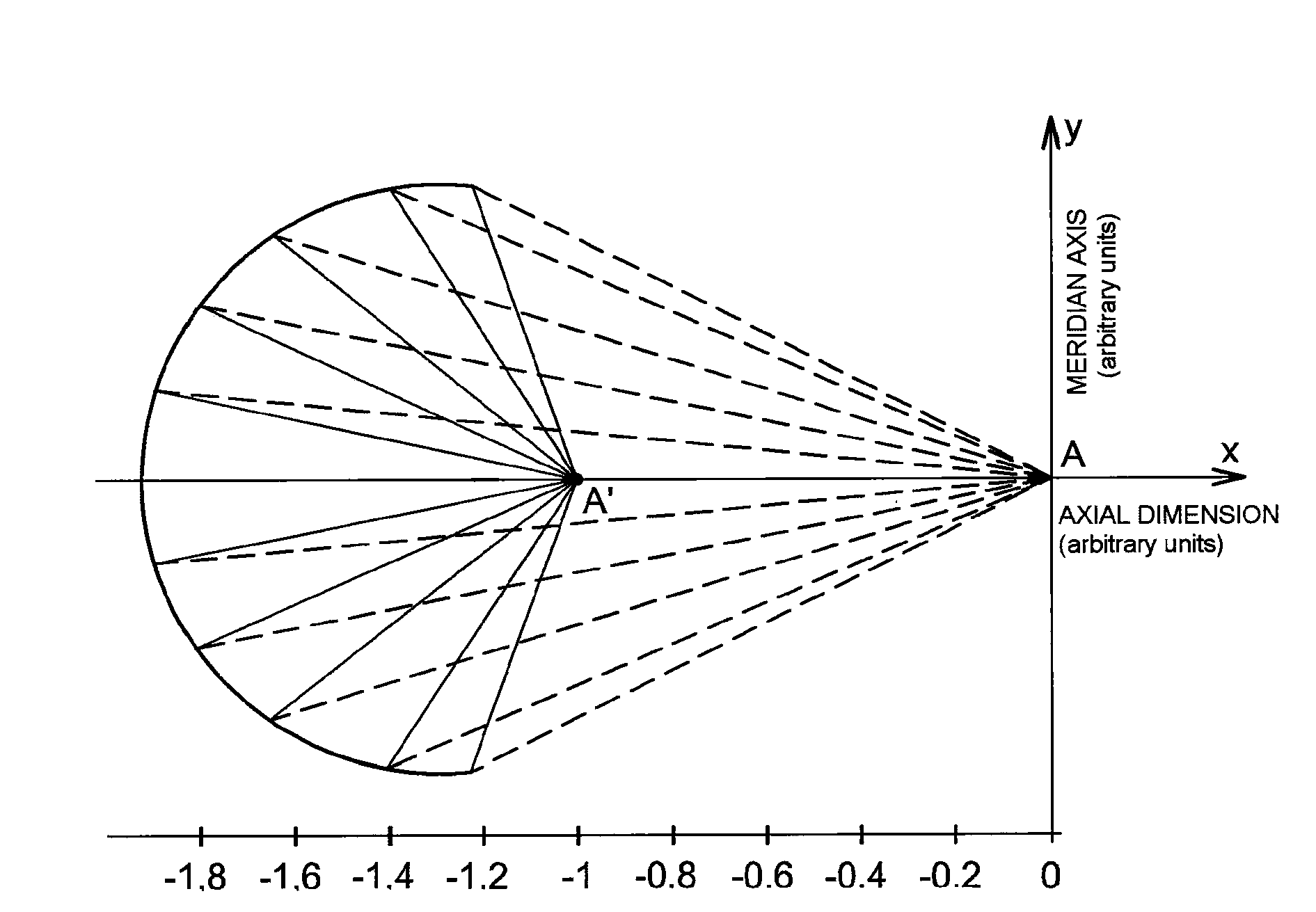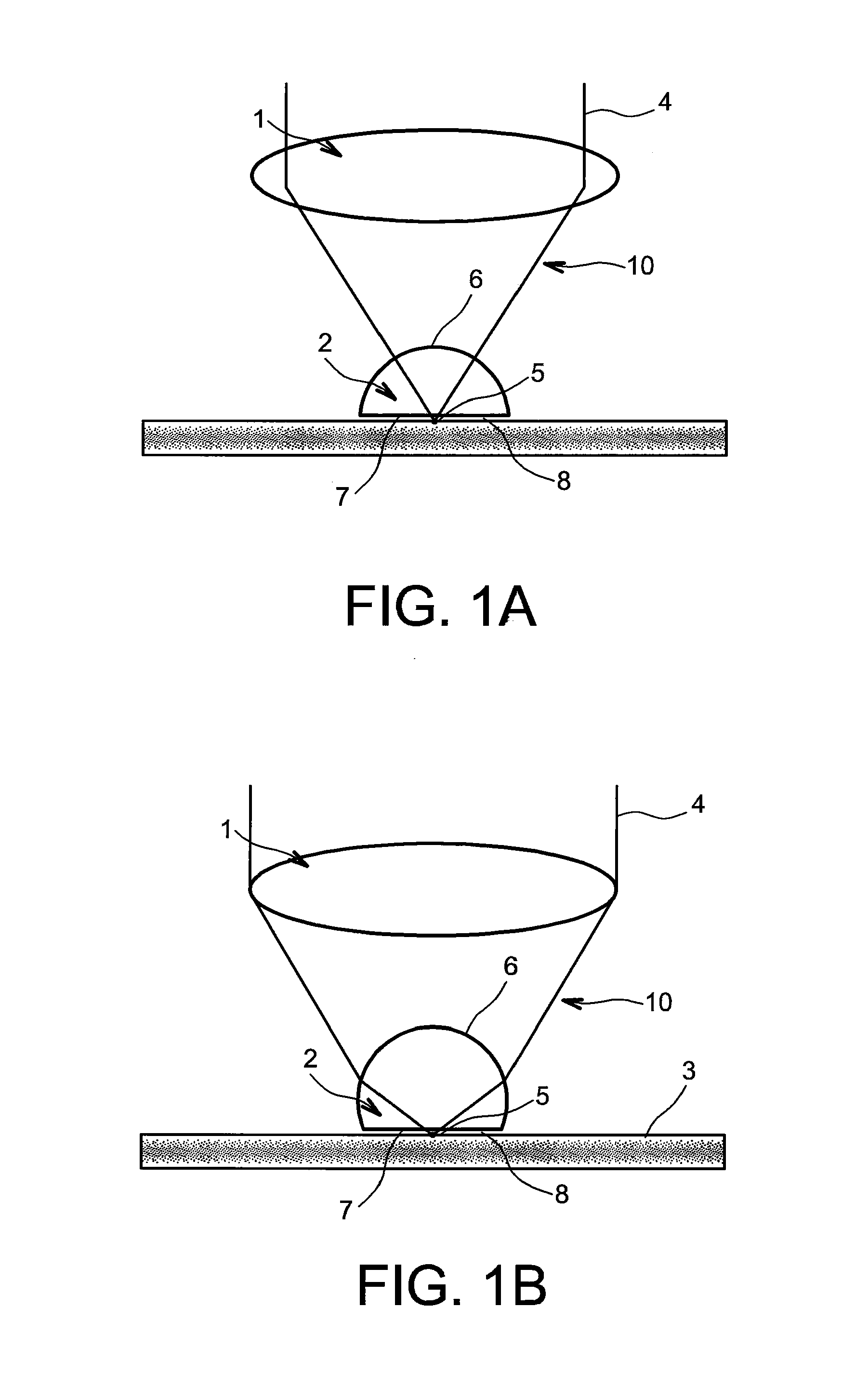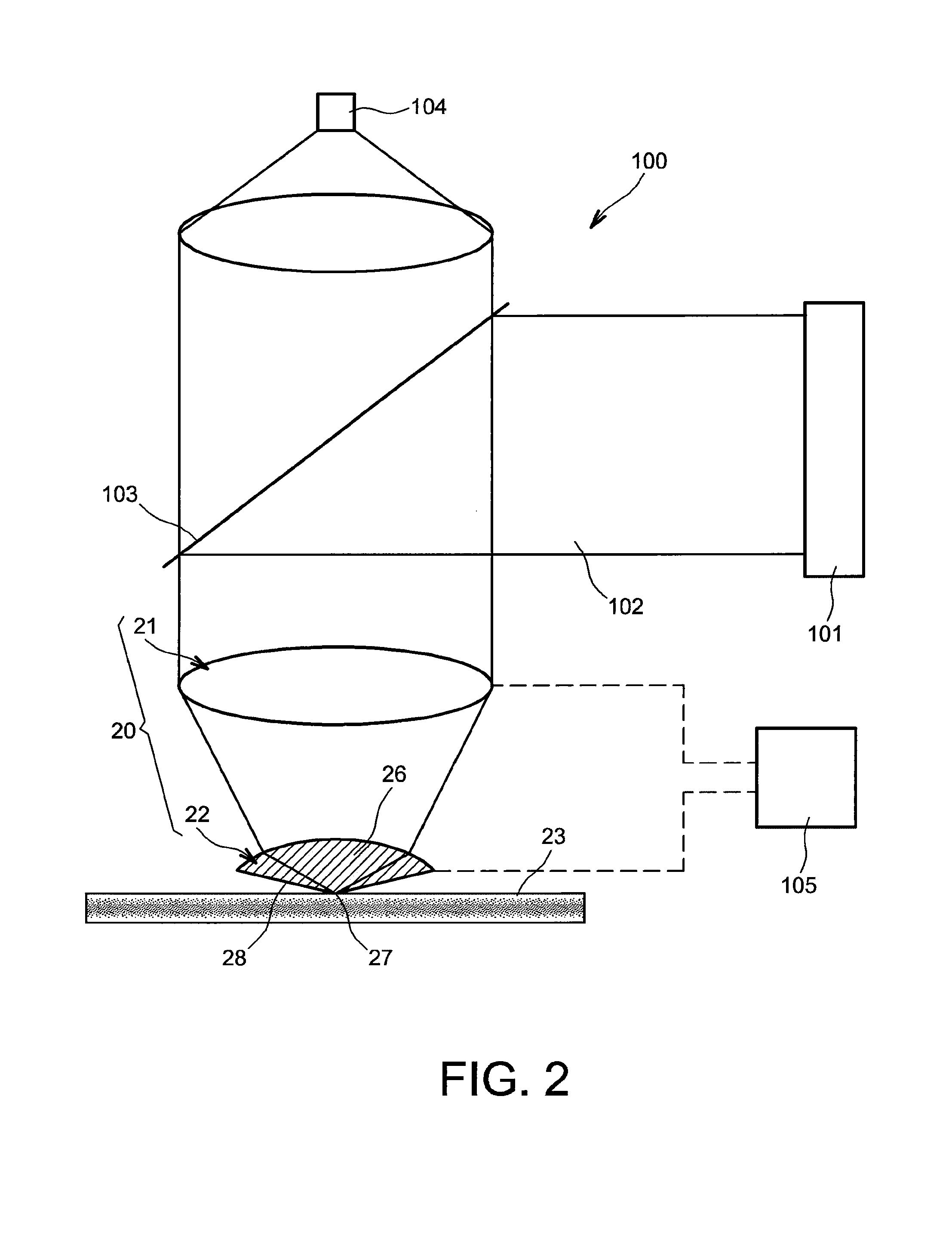Solid immersion lens with increased focusing capacity
a technology of focusing capacity and solid immersion, which is applied in the field of solid immersion lens with increased focusing capacity, can solve the problems of increasing the data density of the optical recording medium, and proving imperfection, so as to reduce the size of the spot and more generally the maximum cross-section dimension
- Summary
- Abstract
- Description
- Claims
- Application Information
AI Technical Summary
Benefits of technology
Problems solved by technology
Method used
Image
Examples
Embodiment Construction
[0014]The object of the present invention is to propose a solid immersion lens which does not have the above limitations and difficulties i.e. having increased focusing capacity.
[0015]A further object of the invention is to propose a solid immersion lens with which it is possible to further reduce the size of the spot and more generally the maximum cross-section dimension of an optical beam emerging from this lens when it is utilized in an optical head downstream of an objective lens.
[0016]To achieve these purposes, the invention more precisely concerns a solid immersion lens made in a material of refractive index n1, having an effective separation dioptre with a medium of refractive index n2, an optical axis, a virtual object focal point for a convergent optical beam entering the SIL lens via the effective dioptre, this virtual object focal point being conjugate with a real image focal point. The effective dioptre is defined by the equation √{square root over (x2+y2)}−n√{square roo...
PUM
 Login to View More
Login to View More Abstract
Description
Claims
Application Information
 Login to View More
Login to View More - R&D
- Intellectual Property
- Life Sciences
- Materials
- Tech Scout
- Unparalleled Data Quality
- Higher Quality Content
- 60% Fewer Hallucinations
Browse by: Latest US Patents, China's latest patents, Technical Efficacy Thesaurus, Application Domain, Technology Topic, Popular Technical Reports.
© 2025 PatSnap. All rights reserved.Legal|Privacy policy|Modern Slavery Act Transparency Statement|Sitemap|About US| Contact US: help@patsnap.com



